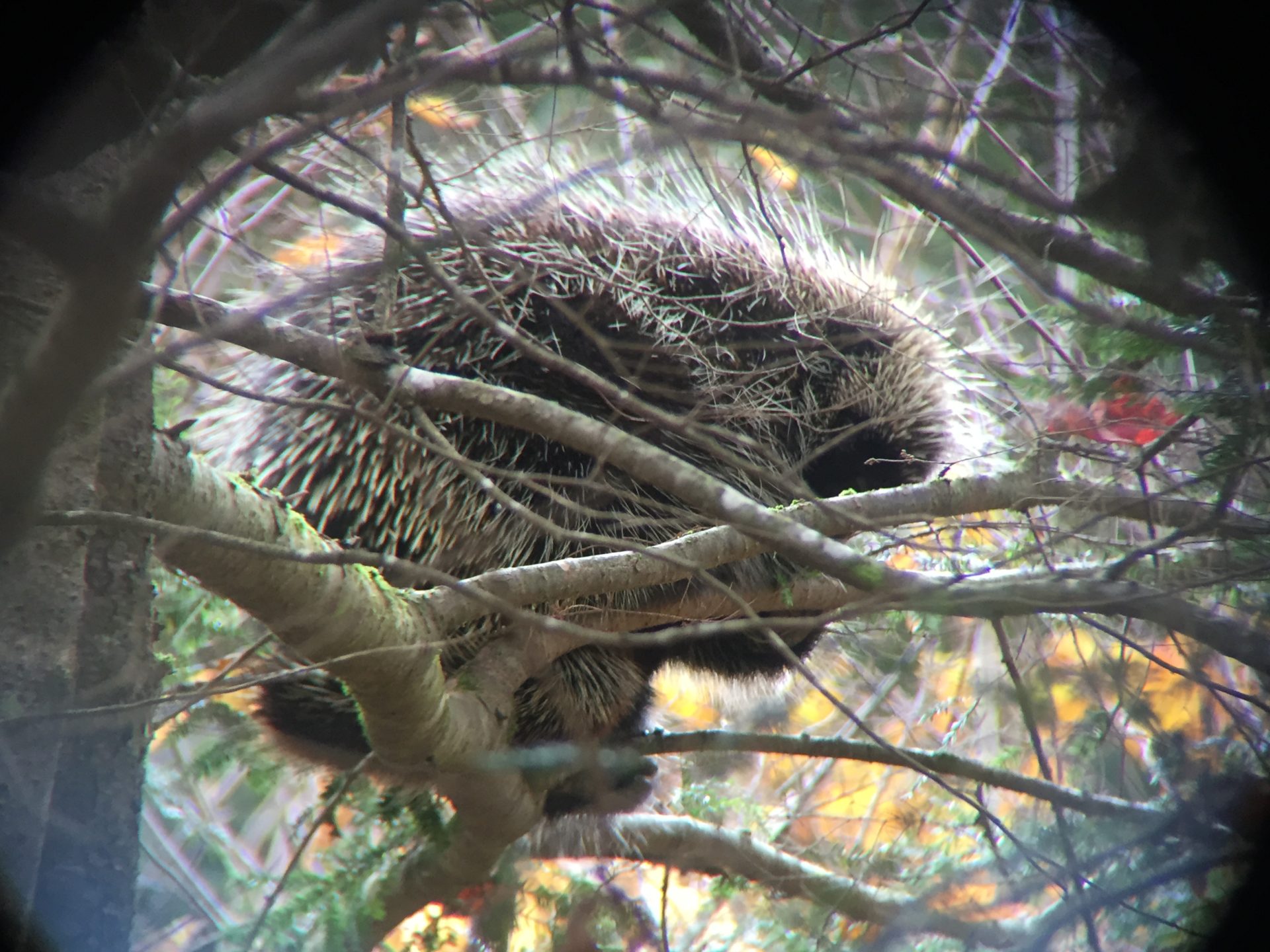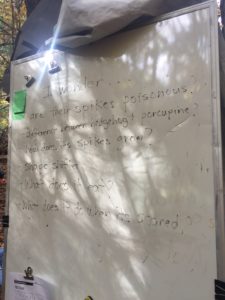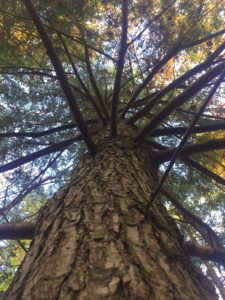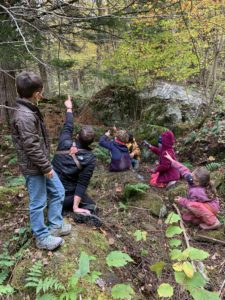A Porcupine in the Classroom

By Zac Cota, NBNC Teacher-Naturalist
The first and second graders at Moretown Elementary know they share their forest with many other animals. Chickadees sing while searching for food in the treetops. Worms and slugs live under moist logs. The antics of Red Squirrels provide daily entertainment. One special visitor, however, left only a trace of its presence: a handful of quills at the base of a tree. On a recent ECO session, students discovered the identity of their mysterious neighbor, and developed a deeper appreciation for the forest they share.
I joined the group, as I do each week, in their forest classroom: an open grove of trees on the forest edge behind the school. Thanks to the work of teachers and volunteers, it is now furnished with stumps for seats and rain-shedding tarps. After a quiet literacy time in which students were scattered throughout the woods reading intently in pairs, the kids were feeling ready for an adventure. They asked if I would lead them further into the forest. We formed a well-spaced line and explored up the hill, climbing through a jumble of mossy rocks known to the students as the “fairy village”.
As we approached a tall hemlock, one student exclaimed “look!” and pointed to a branch just above us, where, perched perfectly in the crotch of a large limb, was some sort of creature. “It’s a sloth!” said one student. “Maybe it’s a baby bear,” said another. “It has a monkey face,” observed a third. Students sat under the tree,whispering so as not to startle the animal. After a few minutes of carefully noting its shape, colors, and features, we finally arrived at a consensus: we had found the porcupine who had left some quills nearby.
As we watched it, we wondered about its life and listed questions to research back in the classroom. How big is its family? Are their spikes poisonous? What does it do when it’s scared? A question about its diet prompted a conversation that fit into the week’s theme of trees and their life cycles. We talked about the special relationship between the porcupine and the hemlocks on which it feeds--trees that are sadly threatened from the invading Hemlock Woolly Adelgid that is at the doorstep of Central Vermont’s forests. The encounter even integrated with mathematics, where students practiced estimating the number of its quills (around 30,000, we later learned).
It is one thing to read about porcupines in a book. But we learned about them after an intimate experience in a natural space shared by young learners and wild creatures alike. The porcupine provided an opportunity to teach maths, reading, and science. More importantly, it was a chance to foster empathy and stewardship for a natural world that desperately needs it. Moments like this can only happen when we leave the walls of school and turn our attention to the wisdom of the woods.





